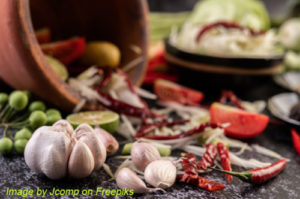Pares or beef pares is one of the popular dish which is equivalent to braised beef. “Pares” literary means “pair” which is a combination of braised beef or beef stew as a tasty viand and a bowl of soup. Commonly it is served with fried rice or garlic rice. Actually there is nothing very special about the dish but it seems that it is very popular.
There are many food establishments that I see serving this dish specially in small eateries along sidewalks. It think the reason why is so popular is the convince and simplicity aside from the good taste of course. It is similar to “tapsilog” where everything you will eat is in a single plate. The fried rice is molded in a cup and poured some beef stew on the side. And a bowl of soup to accompany the dish.
Beef Pares: A Comfort Food Classic That Feels Like Home
When I think of beef pares, I’m instantly transported back to my childhood visits to my Tita Lorna’s carinderia in Quezon City. The scent of star anise wafting from her small kitchen would draw in customers from the surrounding streets, their faces lighting up at the thought of a warm plate of this beloved dish. Tita would always say that the secret to a good pares lies not only in the tender beef but also in the balance of sweet and savory flavors in the sauce.
What Makes Beef Pares So Popular?
Beef pares, often dubbed as the Filipino equivalent of braised beef, is more than just a dish—it’s a nostalgic experience. The name “pares,” meaning “pair,” speaks to its perfect harmony: tender beef in a rich, savory-sweet sauce paired with garlic rice and a comforting bowl of clear soup. It’s no wonder small eateries, or turo-turo stalls, across the Philippines have embraced it as a staple offering.
What sets this apart is its practicality. Like its cousin, tapsilog, everything is served on a single plate, making it a convenient, hearty meal. From busy office workers grabbing a quick bite to students seeking affordable comfort food, it has become a go-to dish for people on the move.
I remember my Kuya Bong saying that eating it at his favorite paresan in Manila was like a warm hug on a stressful day. He claimed that no matter how tough his week had been, the simple joy of spooning savory beef and fragrant garlic rice together was enough to lift his spirits.
A Glimpse into Beef Pares’ Flavorful History
The origins of beef pares are rooted in the Filipino love for combining bold flavors with simplicity. Some say the dish first gained popularity in Manila’s streets during the 1970s, when local food vendors sought to create a meal that was easy to serve yet filling enough to satisfy hungry patrons. Over time, the dish evolved into a symbol of Filipino ingenuity, blending Chinese-inspired seasonings like star anise with native touches such as garlic and soy sauce.
Every family or eatery has its unique spin on the recipe, but the essence remains the same: tender beef, a richly spiced sauce, and that irresistible pairing with garlic rice and soup.
Cooking Pares at Home
Making beef pares might seem intimidating at first, but trust me—it’s surprisingly beginner-friendly. My cousin Carlo once attempted it for a potluck, claiming he had “no idea what he was doing.” By the end of the day, not a single bite was left in his serving dish!
The key to a good pares starts with the beef. Choose brisket for its marbled texture, which becomes melt-in-your-mouth tender after slow boiling. Simmer the meat with onion, salt, and water, skimming off the scum as it cooks. This step not only ensures a clean broth but also tenderizes the beef, making it easier to infuse with flavor later.
Once the beef is ready, the magic happens in the sauce. Sautéing ginger, garlic, and onions releases a mouthwatering aroma that sets the stage for the dish’s rich flavor. Adding soy sauce and brown sugar creates a delicate balance of savory and sweet, while star anise gives the sauce its signature warm, aromatic undertone.
Using cornstarch mixed with water to thicken the sauce is another essential step. It creates a luscious consistency that clings to every bite of beef, ensuring a satisfying mouthful with each spoonful of rice. And don’t forget a drizzle of sesame oil before serving—its nutty fragrance is the cherry on top.
Why These Cooking Techniques Work
Boiling the beef first doesn’t just cook it through; it extracts a rich broth that doubles as the soup served alongside the dish. It’s a practical technique that adds depth to the meal without requiring additional ingredients.
The use of star anise in the sauce is a nod to Chinese culinary influences, a hallmark of many Filipino dishes. Its unique flavor elevates the dish, giving beef pares its distinct identity compared to other local beef stews.
Thickening the sauce with cornstarch ensures it coats the beef evenly, which is essential for the dish’s signature texture and taste. This small step might seem minor, but it’s what turns a simple stew into a dish worthy of celebration.
Serving Beef Pares with Love
When it’s time to serve, the true joy shines through. Mold a mound of garlic rice onto a plate, ladle the beef and its glossy sauce on the side, and accompany it with a bowl of clear soup garnished with scallions. Don’t forget a sprinkle of toasted garlic for that extra crunch and flavor.
Beef pares isn’t just food; it’s a reminder of shared meals, bustling eateries, and the comfort of home. Whether you’re savoring it at your favorite paresan or recreating it in your kitchen, each bite tells a story of Filipino ingenuity, family, and a love for good food.
So the next time you’re looking for a meal that’s simple yet satisfying, remember this classic dish. My Lola Linda always said that cooking with love makes everything taste better—and she was absolutely right.
How To Cook Beef Pares Recipe
Ingredients
- 1 kilo Beef Brisket cut into cubes
- 1 head minced garlic
- 1 pc medium size onion quartered
- 1 pc large onion chopped
- 1 Tbsp. grated ginger
- 1/2 cup soy sauce
- 1/2 cup brown sugar
- 2 pcs. star anise
- 1 tsp. ground pepper
- 1 tsp. cornstarch
- 1 tsp. sesame oil optional
- salt to taste
- scallion or sibuyas mura for garnishing
Instructions
How to cook beef pares:
- Boil the beef briskets in a pot with water, salt and onion. Remove the scum and cook until tender.
- Transfer the meat to a bowl and set aside. Don't throw away the soup stock and set aside also.
- In another pot or deep pan, saute the ginger, garlic and onion.
- Put the boiled meat and stir fry for a few minutes and season with soy sauce, brown sugar, star anise and pepper.
- Pour about 2 cups of soup stock. Simmer for about 5 minutes.
- Add the cornstarch mixed with a little water to the pot to thicken the sauce.
- Season with sesame oil and transfer to a bowl. Garnish with fried toasted garlic.
- Serve with garlic rice and soup stock garnished with scallion.
Video
Notes
Cooking Tips:
Choose the Right Cut of Beef
For a tender and flavorful pares dish, opt for cuts like brisket or shank, which have enough fat and connective tissue to create a melt-in-your-mouth texture. These cuts break down beautifully when simmered, adding richness to both the meat and the sauce. Avoid leaner cuts as they tend to dry out during the slow cooking process, resulting in tougher meat.Don’t Rush the Simmering Process
Patience is key when cooking the dish—simmering the beef low and slow allows the flavors to infuse deeply into the meat. Rushing this step may leave the beef undercooked or lacking that signature tenderness. Let the simmering process do its magic, ensuring a dish that’s rich, flavorful, and worth every minute of waiting.Balance the Sweetness and Savory Flavors
The hallmark of a good pares lies in the balance of sweet and savory. Start with small amounts of sugar and soy sauce, tasting as you go to avoid overpowering either flavor. This careful adjustment ensures the dish remains harmonious and avoids the risk of being too salty or overly sweet.Nutrition Notes:
Calorie and other nutrition information is derived from HappyFolks.Com recipe nutrition calculator. The percent daily value (%DV) is based on a daily 2,000 calorie diet.Nutrition Information:
Amount per Serving:375g, Calories:506kcal, From fat:117, Total fat:19.7g, Saturated Fat:6.6g, Trans Fat:0g, Cholesterol: 154mg, Sodium: 2776g, Total Carbohydrate: 24g, Dietary Fiber: 2g, Sugars: 16g, Protein: 57g, Vitamin C: 56%, Calcium: 5%, Iron: 35%






Thank you so much for this recipe. Made it tonight and it turned out absolutely perfect! My husband couldn’t stop complimenting it
Hi Sam! thanks for sharing your thoughts! Hope u also watched the cooking video!
I tried the recipe tonight! And it was so delicious. I will do it again next time with garlic ricedo
Hi Dorothy! Thanks for cooking this recipe and congrats!
Tried it! So good!!!
Hi Cess, thanks for the compliments!
This recipe is terrific. I added 1 thickly cut red bell pepper with the onion for color and flavor contrast with the beef, and used chuck steak rather than brisket to save money.
My friends asked me to make it again very soon! No higher compliment I’m sure you’d agree.
Hi Mike, that means you are a great cook! congrats!
Hi, i tried this Beef Pares today and it was a success! I will surely check out your other recipes.
Hi Wynes, thanks for sharing your experience! Cheers!
thank you for sharing this recipe. i’m trying it out today.
Hi Joan, thanks for visiting this blog and good luck on your cooking!
Thanks Manny for sharing your beef pares recipe, Im planning to add this menu on my eatery. God bless.
Hi Karen, you are very welcome! Hoping for more success in your business!
Thanks for sharing your beef pares recipe it’s fantastic… love itðŸœðŸœðŸœ
Hi Yam, You are welcome!
Hi Yeshua, thanks for visiting this blog and I trying to cook the beef pares dish!
Hi there, thank you for sharing this recipe. I’ll try to cook this dish. Missed Philippines so much. I was in Lipa Batangas for 2 years… greetings from Malaysia
I tried your Beef Mechado last Quiapo Fiesta. Love it
Hi Evelyn, great! I hope you also try other recipes. Thanks for your comment!
Hi Charmaine, you’re welcome!
At last I found a good and easy recipe for this. 🙂 Thank you!!!